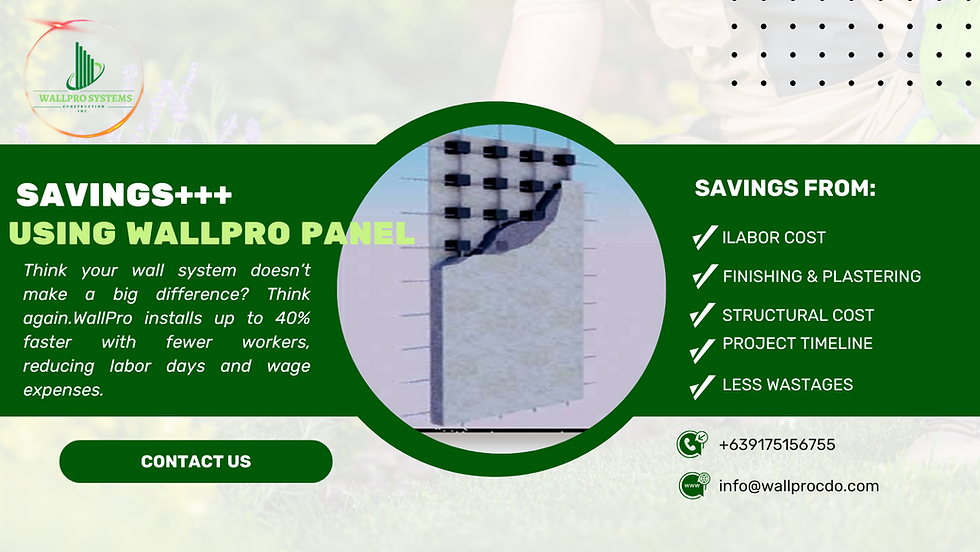Advantages of Structural Lightweight Construction Systems
- Gabriel Mikael
- Aug 20, 2024
- 3 min read
Structural lightweight construction systems are revolutionizing the building industry by offering numerous benefits over traditional construction methods. These systems, which incorporate materials like lightweight concrete, steel frames, and engineered wood, are becoming increasingly popular for a wide range of applications, from residential buildings to large-scale commercial projects. Below, we explore the key advantages of structural lightweight construction systems.
1. Reduced Structural Weight
One of the most significant advantages of structural lightweight construction is the reduction in overall building weight. Materials like lightweight concrete and steel frames are considerably lighter than traditional concrete and masonry, reducing the load on foundations and supporting structures. This weight reduction can lead to cost savings in foundation design and construction, as well as in the transportation and handling of materials.
2. Improved Energy Efficiency
Structural lightweight materials often have better thermal insulation properties compared to their traditional counterparts. This improved insulation results in more energy-efficient buildings, reducing heating and cooling costs. Lightweight construction systems also allow for the incorporation of additional insulation materials, further enhancing the energy efficiency of the building.
3. Faster Construction Times
Lightweight construction systems are typically faster to install than traditional methods. Pre-fabricated components, such as steel frames and lightweight concrete panels, can be manufactured off-site and assembled quickly on-site, reducing construction time. This accelerated building process can be particularly advantageous in projects with tight deadlines or where minimizing disruption to the surrounding area is essential.
4. Enhanced Design Flexibility
The versatility of lightweight construction materials allows for greater design flexibility. Architects and engineers can create innovative and complex designs that would be difficult or impossible to achieve with traditional construction methods. Lightweight materials can be molded, shaped, and adapted to meet specific design requirements, enabling more creative and aesthetically pleasing structures.
5. Environmental Benefits
Structural lightweight construction systems offer several environmental advantages. The reduced weight of materials results in lower transportation emissions, while the use of recycled and sustainable materials, such as engineered wood, contributes to a lower carbon footprint. Additionally, the energy efficiency of lightweight buildings leads to reduced energy consumption and greenhouse gas emissions over the building's lifecycle.
6. Improved Seismic Performance
In regions prone to earthquakes, lightweight construction systems offer superior seismic performance. The reduced mass of the building results in lower inertial forces during seismic events, decreasing the likelihood of structural damage. This makes lightweight construction an ideal choice for buildings in earthquake-prone areas, enhancing both safety and resilience.
7. Cost-Effective Solutions
While the initial cost of lightweight construction materials may be higher in some cases, the overall cost-effectiveness of these systems becomes apparent when considering the long-term savings. Reduced foundation requirements, faster construction times, and lower energy bills contribute to a more economical building process. Additionally, the durability and low maintenance requirements of lightweight materials further enhance their cost-effectiveness.
8. Improved Acoustic Insulation
Lightweight construction materials, particularly those used in walls and floors, often provide better acoustic insulation compared to traditional materials. This improved soundproofing enhances the comfort and privacy of occupants, making lightweight construction an attractive option for residential buildings, hotels, and office spaces.
Structural lightweight construction systems offer a wide range of advantages that make them an appealing choice for modern construction projects. From reduced structural weight and improved energy efficiency to faster construction times and environmental benefits, these systems are well-suited to meet the demands of the 21st-century building industry. As the construction sector continues to evolve, the adoption of lightweight construction systems is likely to grow, driving innovation and sustainability in the built environment.




Comments